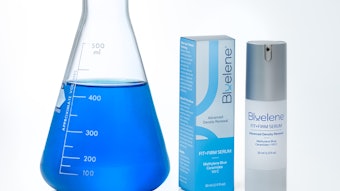The 2012 graduates of the cosmetics and fragrance marketing and management master's degree program at the Fashion Institute of Technology (FIT) in New York presented their Capstone presentations at the Innovation Through Diversity in the Beauty Industry event and reception, sponsored by L’Oréal USA, at FIT’s Katie Murphy Amphitheatre in May. The following white paper accompanied the presentation from Joe Aphinyanaphongs, Jeanine Bernstock, Mary Ellen Ferri, Manami Kuwamura and Margaret Martin.
Introduction
The beauty industry today shares a common goal—to reach one billion new consumers.
"We still have the potential to conquer one billion consumers worldwide.”1 Jean-Paul Agon, L’Oréal
“To thrive in today’s world, we have to shift from selling products to improving the lives of one billion new consumers.”2 Robert McDonald, P&G
"We have an ambitious goal to help more than one billion people improve their health and well-being.”3 Paul Polman, Unilever
Currently, we compete over the same market shares of the middle and upper class population: the 1.4 billion adults living on more than $10,000 per year.4 This creates a red ocean of struggling business models, while there is a huge blue ocean waiting for us to explore at the bottom of the pyramid, the 3 billion adults living on less than $10,000 a year.5 To achieve our collective goal of reaching one billion consumers, we must reinvent the way we work today.
Who Are They?
The billions at the bottom of the pyramid are people just like us, with desires, aspirations and values. They represent over two-thirds of the world’s population, making them the largest socioeconomic group world-wide.6 They are economically active as consumers, producers, entrepreneurs and employees. They represent almost 44% of the world GDP, even though they are largely excluded from formal markets.7 Contrary to popular belief, the populations at the bottom are not just found in developing markets. There are people living on less than $10,000 dollars per year in our own backyards.
Common Misconceptions About These Consumers
They are not intelligent enough. Yet, The New York Times featured a story about a Sudanese orphan accepted into an Ivy League college. Talent, he said, is universal. Opportunity is not.8
They will never be employed by me. When in fact, 97% of future population growth will come from these markets. Their integration into our workforce is imminent.9
They do not have enough buying power. However these untapped, diverse markets represent a $7 trillion dollar market opportunity. They spend over $10 billion dollars a day just to live their lives.10
They are not brand conscious. When in reality, this population is value conscious, but even more so brand conscious. Brands symbolize aspirations for a better life, and instill a much needed sense of security.11
How Do We Connect With These Consumers?
The capitalistic pyramid hierarchy was established as the result of the Industrial Revolution. Yet, despite advances in technology, changing demographics and globalization, most corporations are still confined by this traditional organizational hierarchy. This structure fosters exclusionary behavior, which poses several challenges:
- Information exclusion, where information is not shared among the workforce and is reserved for a select few.
- Organizational exclusion, where organizations are bound in silos, preventing us from collaboration.
- Leadership exclusion, where leaders are not globally mindful enough to reach these new consumers.
To connect with one billion new consumers we must reinvent how we share information, work together and develop leaders. In a traditional pyramid hierarchy, the leaders are at the top and workers are at the bottom. To overcome leadership exclusion, we must first remove the top of the pyramid and redistribute our managers closer to the front line workers. Next, to overcome information exclusion, we must add more structural support and connectivity. Finally, we must unite leadership with one common goal.
The New Organizational Structure: “The Bridge”
This new structure bridges leadership, organizations and information together to reach the future consumer, while attracting the future workforce. Bridges are comprised of three key elements: anchors, beams and a deck.
The anchors represent leadership, which establishes the foundation of the organization with a strong vision and company mission.
The beams represent networks of communication, transmitting the information between the leaders and their workforce. This fosters a multi-dimensional dialogue that goes up, out, and across, in order to reach all stakeholders.
In a traditional hierarchy, pyramids can get bigger, but they can’t go anywhere, whereas bridges are open and flexible, yet sturdy and resilient. Bridges create connections, open new possibilities and connect what is not naturally connected.
Leadership
In the bridge, leadership is supportive of the workforce and supported by the consumer. This interdependent partnership allows for the cultivation of global leaders that will connect us with over one billion new consumers.
Leadership cultivation at the bottom of the pyramid currently exists and has proven to be successful:
- Project Shakti, started by Hindustan Lever Limited, provides Indian women at the bottom of the pyramid with the tools and education needed to sell and distribute Unilever products.12 This mutual value creation improves the livelihood of these women and the communities in which they live. It also becomes a novel distribution channel for Unilever. In 2010, the Shakti network reached more than 600 million consumers, and today, the program is being scaled out to Southeast Asia and Africa.
- Endeavor, a nonprofit organization, provides budding entrepreneurs in emerging markets with world class mentorship, strategic advice, and access to networks to grow them into successful business people. For example, Helena Assis, a Brazilian woman, started making hair products in her local community. After realizing she lacked the resources and training needed to take her business, Beleza Natural, to the next level, she reached out to Endeavor, and through them, grew her business to employ more than 1,300 people and deliver more than $30 MM in revenues each year.13
If the beauty industry were to cultivate a presence like this in new markets, we could be at the forefront of identifying new opportunities, capturing new distribution channels, and closing global leadership gaps.
Information
In the bridge, information connectivity allows for efficient collaboration to ignite innovation and create a feeling of community among the global workforce. This vibrant network will strengthen our ability to create the best products at the lowest cost for the most people in the shortest time. This will bring us closer to our goal of connecting with one billion new consumers.
Think of what the democratization of information through Google has done for the world’s collaboration. By empowering our workforce with modern tools to facilitate the transfer of information, the beauty industry can leverage its expertise across the global organization and collaborate beyond our existing structures.
Moreover, only 13% of university graduates from emerging markets are suitable for employment in our corporations, simply because they lack English skills. However, through technology today, we are empowered to read in every language, write in every language, and speak in every language. This provides a seamless transfer of information to react even more quickly to the changing needs of the global consumer.
Workforce
In the bridge, a flexible workforce gives this structure its most important attribute: resilience. After all, a bridge that is rigid will break. We must be flexible, inclusive and respectful of global values in order to attract, retain and engage the future workforce that will connect us with one billion new consumers.
Together reinventing how we develop leaders, how we share information, and how we work together can connect us to one billion new consumers, but we will still lack one essential element.
Conclusion
A bridge can connect people, but does not have a purpose unless people cross it. We must accept that today, we are the now the minority not the majority. Additionally, we must foster a completely inclusive culture that encourages an exchange through awareness and acceptance of different values, so the beauty industry will be embraced by the global community.
Now that you know how to reach one billion new consumers, are you and your organizations ready?
- How many people from diverse markets are on your board?
- How often do your managers and leaders spend time living in these countries?
- Do you know the cultures and values of your employees and consumers in Shanghai, in Mumbai, in Jakarta?
- Do you have a global talent pipeline? Are you even fit to attract them?
- Have you equipped your workforce with technologies to work smarter?
To cross the bridge, we must go back to our vision. We believe that beauty belongs to the billions. And to reach every last one of us, we must embrace the possibility that we can create a way of being with each other that honors our common humanity, and allows us to approach each other with a sense of interest, mutual respect, engagement, and community for beauty that bridges every billion.
Where will your bridge go?
References
- “New L’Oreal Research Center,” Estetica (Apr 4, 2012) https://www.estetica.it/?method=news&action=zoom&id=1038
- “Touching Lives, Improving Life” P&G, www.pg.com/en_US/...people/touching_lives_improving_life.pdf
- “Message from Our CEO” Unilever,(Apr 10, 2012) https://www.unilever.com/planet-and-society/
- CS Ag, Credit Suisse Global Wealth Databook, Forbes, 1–129 (October 2010) https://infocus.credit-suisse.com/data/_product_documents/_shop/323525/2011_global_wealth_report.pdf
- Ibid, 4
- Ibid, 4
- “Global Diversity and Inclusion. A Vision and Strategy for the Future,” Microsoft, Web (Apr 1, 2012 http://www.microsoft.com/about/diversity/en/us/vision.aspx
- ND Kristof “From South Sudan to Yale.” The New York Times Web, (Mar 28, 2012) https://www.nytimes.com/2012/03/29/opinion/kristof-from-south-sudan-to-yale.html
- Ibid, 4
- CK Prahalad, The Fortune at the Bottom of the Pyramid: Eradicating Poverty Through Profits, Wharton School Pub, Upper Saddle River, NJ (2009)
- Ibid, 10
- Shakti Programme, India, Project Shakti is unleashing the potential of rural India. http://www.unilever.com/careers/insideunilever/oursuccessandchallenges/shaktiprogrammeindia/
- P Marguiles, “Linda Rottenberg’s High-Impact Endeavor,” Strategy+Business Feb 28 2012: Spring 2012 66, Web (Apr 15, 2012) http://m.strategy-business.com/article/12106?gko=8b1a9
- C Benko and A Weisberg, Mass Career Customization: Aligning the Workplace with Today’s Nontraditional Workforce, Harvard Business School Press, Boston (2007)










